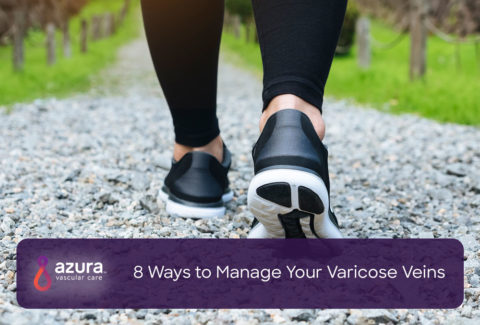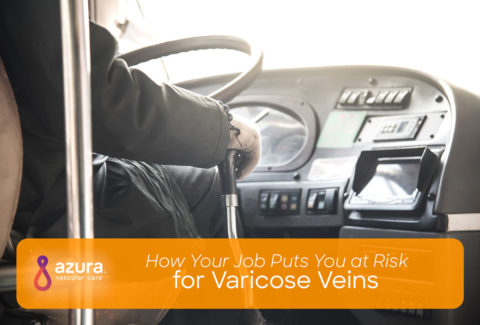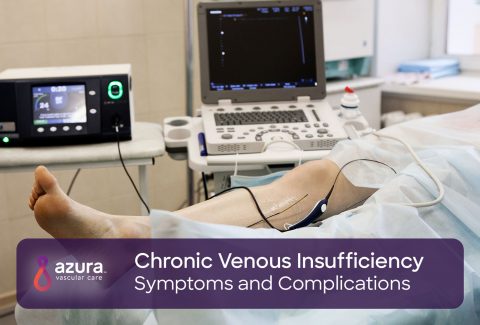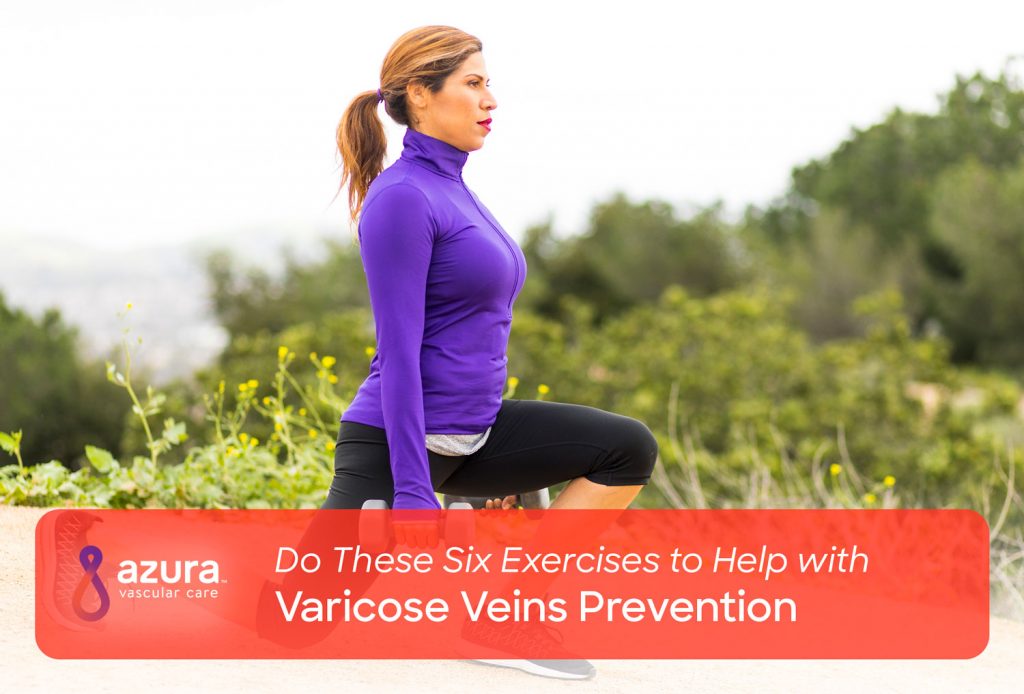
Regular physical activity can reduce your chances of developing varicose veins. And if you’re already living with varicose veins, exercise may ease your symptoms and keep your condition from progressing. Exercise alone isn’t always enough to prevent or treat varicose veins but some physical activities can make a big difference. Read on to learn more about the best exercises for varicose veins prevention.
Does Exercise Really Help with Varicose Veins?
Many people are curious about the relationship between exercise and varicose veins. There’s no foolproof method for preventing varicose veins, but keeping physically active can reduce your risk. (i) Regular exercise improves circulation in your legs and keeps the blood pumping. Staying active can also help you maintain a healthy weight, which may prevent weight-related vascular issues.
If you already have varicose veins, exercise may ease your symptoms. People with varicose veins often report that their legs feel swollen, itchy, or heavy. (ii) Regular exercise increases blood circulation and can help lessen these symptoms.
Is Exercise Safe for Me?
Most forms of exercise are healthy and beneficial, but not all activities are safe for everyone. If you have any doubt about whether the physical activities below are safe for you, ask your doctor. If you’re pregnant, be sure to talk to your obstetrician before starting a new exercise regimen.
Even if you’re in good health, always listen to your body. If any activity becomes painful or if you feel dizzy, stop immediately and consult a doctor. (iii)
How to Prevent Varicose Veins Through Exercise
Many doctors recommend at least 30 minutes of physical activity a day. (iv) If necessary, you can break that time up and exercise for 10 minutes, three times a day.
Walking
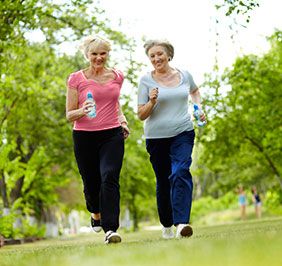 Walking is highly beneficial and usually safe for people of all ages and fitness levels. Regular walks can help you lose weight, maintain a healthy blood pressure, and strengthen your bones and muscles. (iv)
Walking is highly beneficial and usually safe for people of all ages and fitness levels. Regular walks can help you lose weight, maintain a healthy blood pressure, and strengthen your bones and muscles. (iv)
Bicycling
Bicycling is a low-impact exercise. Like walking, it can increase circulation while still protecting your joints. Regular cycling can strengthen your calf muscles and promote healthy blood flow. Both traditional and stationary bikes can be used.
If you don’t have access to a bicycle, you can still stretch your leg muscles by lying on your back, drawing your knees toward your chest, and making a pedaling motion with your legs.
Leg lifts
Leg lifts are simple stretches that don’t require any special equipment. Begin by lying flat on your back. Lift one leg at a time. Hold your leg in the air for a few seconds before alternating legs. This exercise can help stretch muscles in your legs. (v)
Many people also practice leg lifts while standing. Besides stretching your muscles and improving circulation, this exercise can increase flexibility in your muscles. (v) Hold onto a stable object like a chair and extend one leg in front of you. Hold this position for a few seconds, and then alternate legs.
Lunges
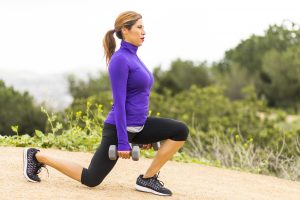 Lunges work many different muscle groups in your feet and calves. When these muscles are strong and healthy, they can help keep blood flowing in the right direction. (i) Begin by standing with your feet slightly apart. Step forward and bend your knee. Be sure to keep your knee directly above your ankle. Hold the lunge for a few seconds, then straighten up and switch legs.
Lunges work many different muscle groups in your feet and calves. When these muscles are strong and healthy, they can help keep blood flowing in the right direction. (i) Begin by standing with your feet slightly apart. Step forward and bend your knee. Be sure to keep your knee directly above your ankle. Hold the lunge for a few seconds, then straighten up and switch legs.
Rocking feet
Stretching out the muscles in your feet also helps improve muscle strength and circulation. Begin by resting your weight on the ball of your feet for a few seconds, then lower the heel. Next, rest your weight on your heel and lift the ball of your foot. You can perform this stretch while standing or sitting. If you’re standing, be sure to hold onto a stable object for balance.
Elevate your legs
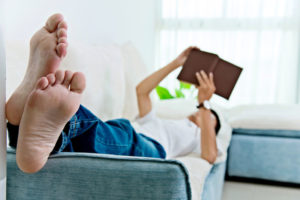 Raising your legs can help relieve swollen or achy legs caused by backed-up blood flow. (i) Begin by lying on your back on the floor or on your bed. Next, raise your legs straight up in the air. If necessary, prop them against the wall. Hold this position for a few minutes and then lower your legs to the ground. Repeat as necessary.
Raising your legs can help relieve swollen or achy legs caused by backed-up blood flow. (i) Begin by lying on your back on the floor or on your bed. Next, raise your legs straight up in the air. If necessary, prop them against the wall. Hold this position for a few minutes and then lower your legs to the ground. Repeat as necessary.
When Exercise Isn’t Enough for Symptomatic Relief of Varicose Veins
Exercise can often provide significant relief from painful varicose vein symptoms, but physical activity alone isn’t always enough to resolve your symptoms. Varicose veins can develop even if you’re physically active and can progress despite a regular exercise regimen. (i)
If you’re frustrated by unsightly or painful varicose veins, medical treatment may help. Vascular centers offer a variety of varicose veins treatments. Most procedures are minimally invasive and performed in an outpatient setting with little discomfort and downtime.
If you need varicose veins treatment, Call 844-832-VEIN (8346) to schedule an appointment with a vascular specialist.
Sources:
(i) U.S. Department of Health and Human Services. (2018, September 25). Varicose veins and spider veins. Retrieved October 4, 2018, from https://www.womenshealth.gov/a-z-topics/varicose-veins-and-spider-veins.
(ii) Mayo Clinic. (2017, December 28). Varicose veins: Symptoms & causes. Retrieved October 4, 2018, from https://www.mayoclinic.org/diseases-conditions/varicose-veins/symptoms-causes/syc-20350643.
(iii) Harvard Medical School. (2015, February). Safe exercise: Know the warning signs of pushing too hard. Retrieved October 4, 2018, from https://www.health.harvard.edu/pain/safe-exercise-know-the-warning-signs-of-pushing-too-hard.
(iv) Mayo Clinic. (2016, March 19). Walking: Trim your waistline, improve your health. Retrieved October 4, 2018, from https://www.mayoclinic.org/healthy-lifestyle/fitness/in-depth/walking/art-20046261.
(v) American Academy of Orthopaedic Surgeons. (2009, February). Knee exercises. Retrieved October 4, 2018, from https://orthoinfo.aaos.org/en/staying-healthy/knee-exercises/.

